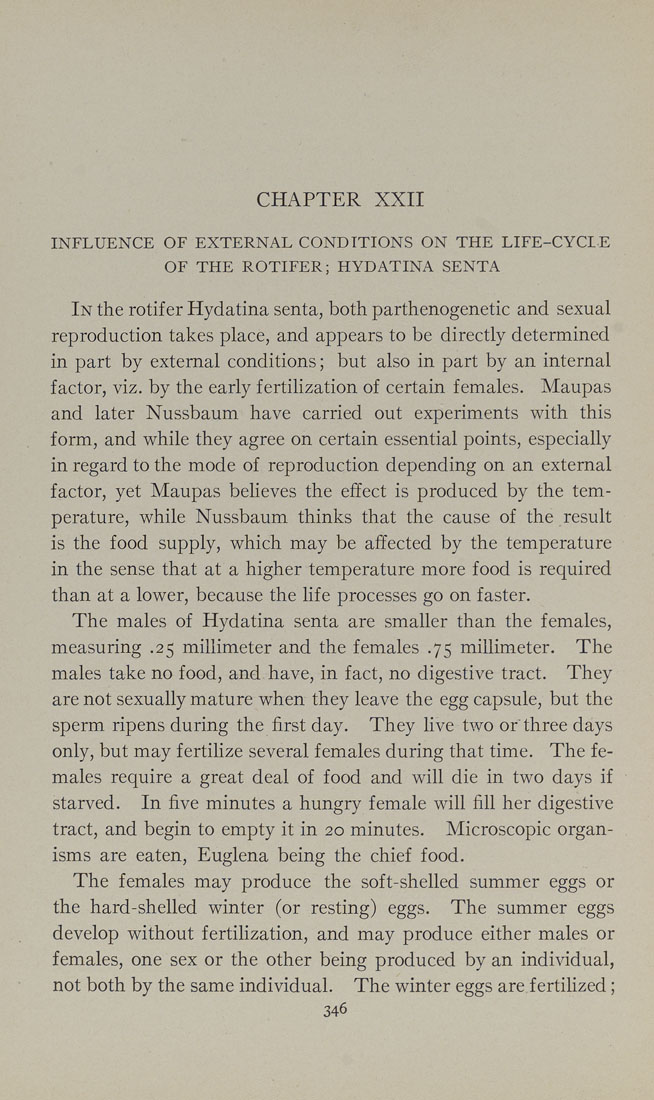CHAPTER XXII
INFLUENCE OF EXTERNAL CONDITIONS ON THE LIFE-CYCLE
OF THE ROTIFER; HYDATINA SENTA
In the rotifer Hydatina senta, both parthenogenetic and sexual
reproduction takes place, and appears to be directly determined
in part by external conditions; but also in part by an internal
factor, viz. by the early fertilization of certain females. Maupas
and later Nussbaum have carried out experiments with this
form, and while they agree on certain essential points, especially
in regard to the mode of reproduction depending on an external
factor, yet Maupas believes the effect is produced by the tem¬
perature, while Nussbaum thinks that the cause of the result
is the food supply, which may be affected by the temperature
in the sense that at a higher temperature more food is required
than at a lower, because the life processes go on faster.
The males of Hydatina senta are smaller than the females,
measuring .25 millimeter and the females .75 millimeter. The
males take no food, and have, in fact, no digestive tract. They
are not sexually mature when they leave the egg capsule, but the
sperm ripens during the first day. They live two or three days
only, but may fertilize several females during that time. The fe¬
males require a great deal of food and will die in two days if
starved. In five minutes a hungry female will fill her digestive
tract, and begin to empty it in 20 minutes. Microscopic organ¬
isms are eaten, Euglena being the chief food.
The females may produce the soft-shelled summer eggs or
the hard-shelled winter (or resting) eggs. The summer eggs
develop without fertilization, and may produce either males or
females, one sex or the other being produced by an individual,
not both by the same individual. The winter eggs are fertilized;
346
|








